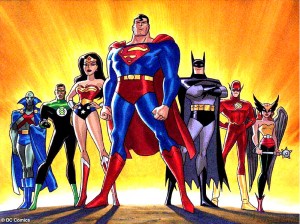Just imagine: you’re dancing with beautiful ballerinas on an island made of dark chocolate and shortbread cookies. Flowers are falling from the sky like rain. Everything is in slow motion. You’re cheeks are cherry red from all of your laughter; it is absolute paradise – suddenly….you wake up. Immediately you know you’re never going to experience that again because it was only a dreams and dreams aren’t meant to be relived…or are they…?
In 2011, some research had been conducted to figure out if we can, in fact, see what our minds are visualizing inside. Surprisingly..it’s actually possible. Scientists from UC Berkeley have a system they developed that analyzes brain activity and matches it to different motions and shapes. The subjects were fed these video clips that are on the left side of the screen and what researchers were able to reconstruct is showed on the right.
The way they break it down and figure out what our brain sees is based on a map of our brain that is flattened and studied based upon which parts of the visual cortex are flared up. It is explained in further detail in this video.
They used three different subjects for the experiments—incidentally, they were part of the research team because it requires being inside a functional Magnetic Resonance Imaging system for hours at a time. The subjects were exposed to two different groups of Hollywood movie trailers as the fMRI system recorded the brain’s blood flow through their brains’ visual cortex.
The readings were fed into a computer program in which they were divided into three-dimensional pixels units called voxels (volumetric pixels). This process effectively decodes the brain signals generated by moving pictures, connecting the shape and motion information from the movies to specific brain actions. As the sessions progressed, the computer learned more and more about how the visual activity presented on the screen corresponded to the brain activity. –http://gizmodo.com/5843117/scientists-reconstruct-video-clips-from-brain-activity
It seems as though our brains can construct things that are more familiar to us (like people) as opposed to things that are less familiar (like abstract art)(http://www.huffingtonpost.com/2014/04/01/mind-reading-brain-reconstruct-face_n_5049255.html). However, this technology still opens up an unimaginable amount of doors for us – especially in psychological areas. Using these techniques we can further analyze the human mind and better understand what someone is or was going through. It’s a great new way to communicate what we mean.
The only downside that I can see to this is people taking advantage of this technology… But that’s besides the point. I’m really impressed with this technology and I’m surprised I haven’t heard of this already, considering this research was conducted three years ago. With my experience in psychology classes, I know it’s still being taught that it’s not possible to view the images our brain sees and the only brain behavior we can study is brainwaves. It makes me wonder why these studies haven’t been as widespread as they ought to be. Although I admit, some of the brain images would be a bit hard to depict if they weren’t compared side-by-side to the actual images but I feel like that’s something that will improve as technology gets better. It’s also important to consider the fact that this was only a study done using the most basic form of visual perception so of course it’s going to look a bit botchy. And who knows, one day we might actually have a vivid movie that we can replay on special pillows that capture our dreams and oh what a day that will be!
Bibliography
Diaz, Jesus. “Scientists Reconstruct Brains’ Visions Into Digital Video In Historic Experiment.” Gizmodo. N.p., 22 Nov. 2011. Web. 30 Nov. 2014. <http://gizmodo.com/5843117/scientists-reconstruct-video-clips-from-brain-activity>.













